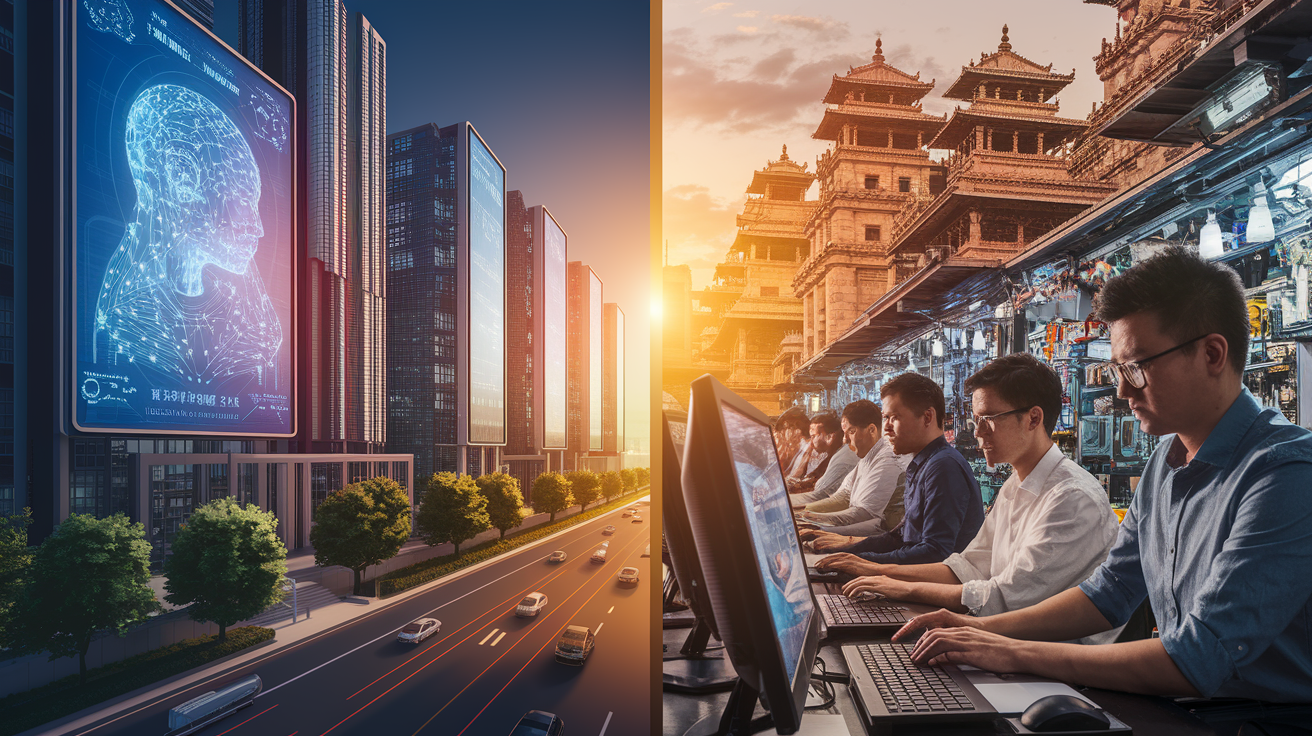China and India, two giants of the global tech arena, are at the forefront of innovation. While China shines with its strength in artificial intelligence and hardware, India leads the software and IT services sector. These two markets offer unique opportunities and challenges for investors. The following chapters illuminate the innovative power and growth potential of both countries, creating a comprehensive picture of the tech landscape.
From Hardware Giants to IT Giants: A Comparison of the Innovative Power of China and India

The innovative power of tech companies in China and India grants both countries a notable position on the global stage. However, these countries exhibit different strengths, reflecting not only their technological capabilities but also their economic development strategies.
China is a leader in the field of artificial intelligence (AI) and robotics. With significant investments in research and development, China has clearly established itself as a pioneer in autonomous technologies. Companies like Geek+ mark China’s advances through the development of autonomous mobile robots, which are revolutionizing various sectors, from manufacturing to logistics. Government support plays a crucial role here: through the promotion of AI centers and cooperation between universities and businesses, China continually invests in its technological future.
On the other hand, India boasts impressive expertise in the IT services sector. Companies like Infosys and Tata Consultancy Services (TCS) are globally recognized and have radically shaped the IT services outsourcing market. India’s strength lies in its efficient and cost-effective IT solutions, which companies worldwide utilize. Additionally, India’s rapidly growing startup sector shows an increasing interest in AI, although barriers to innovation remain in infrastructure.
A fundamental difference in the innovative power of these two giants is the infrastructure base on which they rely. In recent years, China has massively invested in digital infrastructure, significantly accelerating technological progress. This allows for faster implementation of AI applications in daily life. India, in contrast, faces the challenge of further expanding this infrastructure. Political stability and federal structures present further obstacles that can slow down progress.
However, an interesting aspect is the international cooperation that India actively seeks to enhance its innovative power. Through partnerships with countries like Germany in the fields of AI and renewable energies, India can unlock potential beyond its current infrastructure boundaries.
Despite the different paths taken by China and India, both present significant potential to remain innovative leaders in their respective sectors. China’s trajectory will be further characterized by aggressive investments and deregulation, while India will focus on international alliances and strengthening its technological base. Overall, China currently dominates in the fields of AI and hardware, while India holds a prominent position in the global IT services sector.
Investments and Challenge Barriers: Market Potentials in China and India

The comparison between technology companies in China and India reveals fascinating differences and opportunities in terms of market size and growth potential. China has established itself as a pioneer in the tech market, particularly in sectors such as artificial intelligence (AI), smartphone manufacturing, and lithium-ion batteries. These developments are supported by a robust investment culture, bolstered by government backing and the commitment of leading companies like Alibaba, Tencent, and Baidu. China’s focus on expanding data center capabilities underscores its goal to position itself as a leading global tech market.
In contrast, India shows strong growth potential, although its market is smaller than China’s. With significant advancements in the software and IT services sector, India’s growth is heavily anchored in digital transformation, driven by improved digital infrastructure and an increase in internet usage. The Indian government supports this development through the Production-Linked Incentive (PLI) program to promote local manufacturing of smartphones and energy storage technologies like lithium-ion batteries.
Chinese investments are heavily concentrated in the AI sector, with companies allocating enormous sums to secure leadership in this key technology. In India, on the other hand, AI adoption is continually increasing, with the AI Adoption Index indicating a future shift towards more AI-driven solutions. Investments in this sector are seen as an opportunity to significantly boost productivity and innovation rates.
However, both countries face different challenges. In China, regulatory barriers can hinder the export of its technologies, while reliance on imported technologies is threatened by trade conflicts. India, on the other hand, grapples with infrastructural issues that could hinder growth, while strong competition from established markets like China and the United States exerts pressure on the local industry.
Nevertheless, significant opportunities also present themselves. In China, the demand for hyperscale computing will be a major driver for the expansion of the data center market. India’s digital transformation and support programs for tech sectors promise to increase the speed of growth. This dynamic contrast between an established tech giant and an emerging innovation hub shows that both China and India will play central roles in the future global tech market.